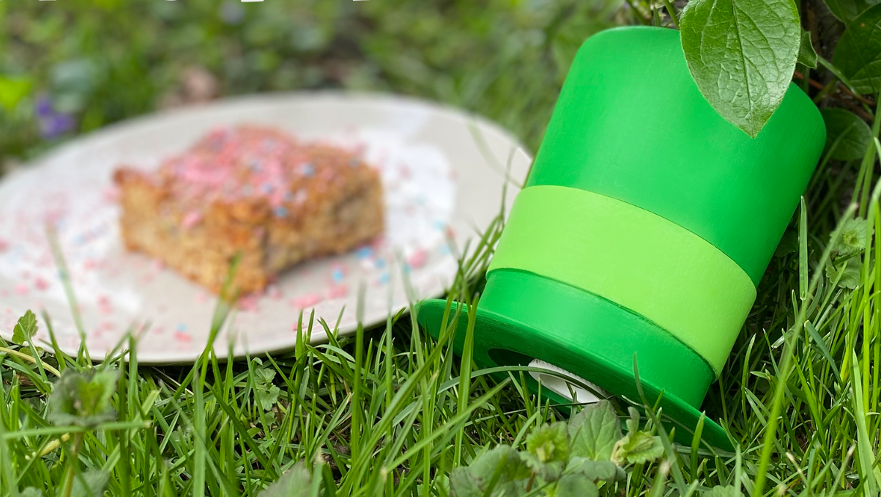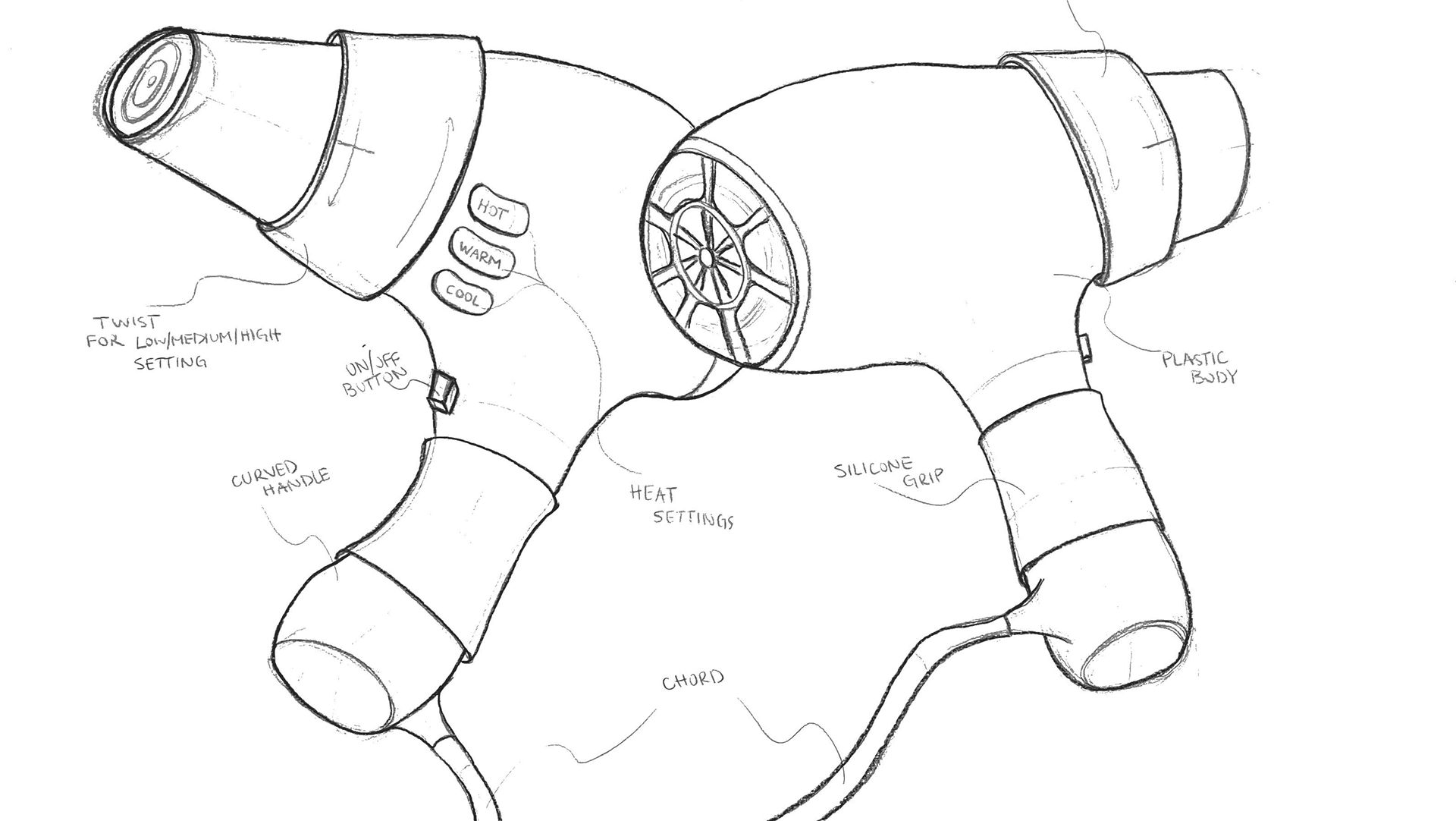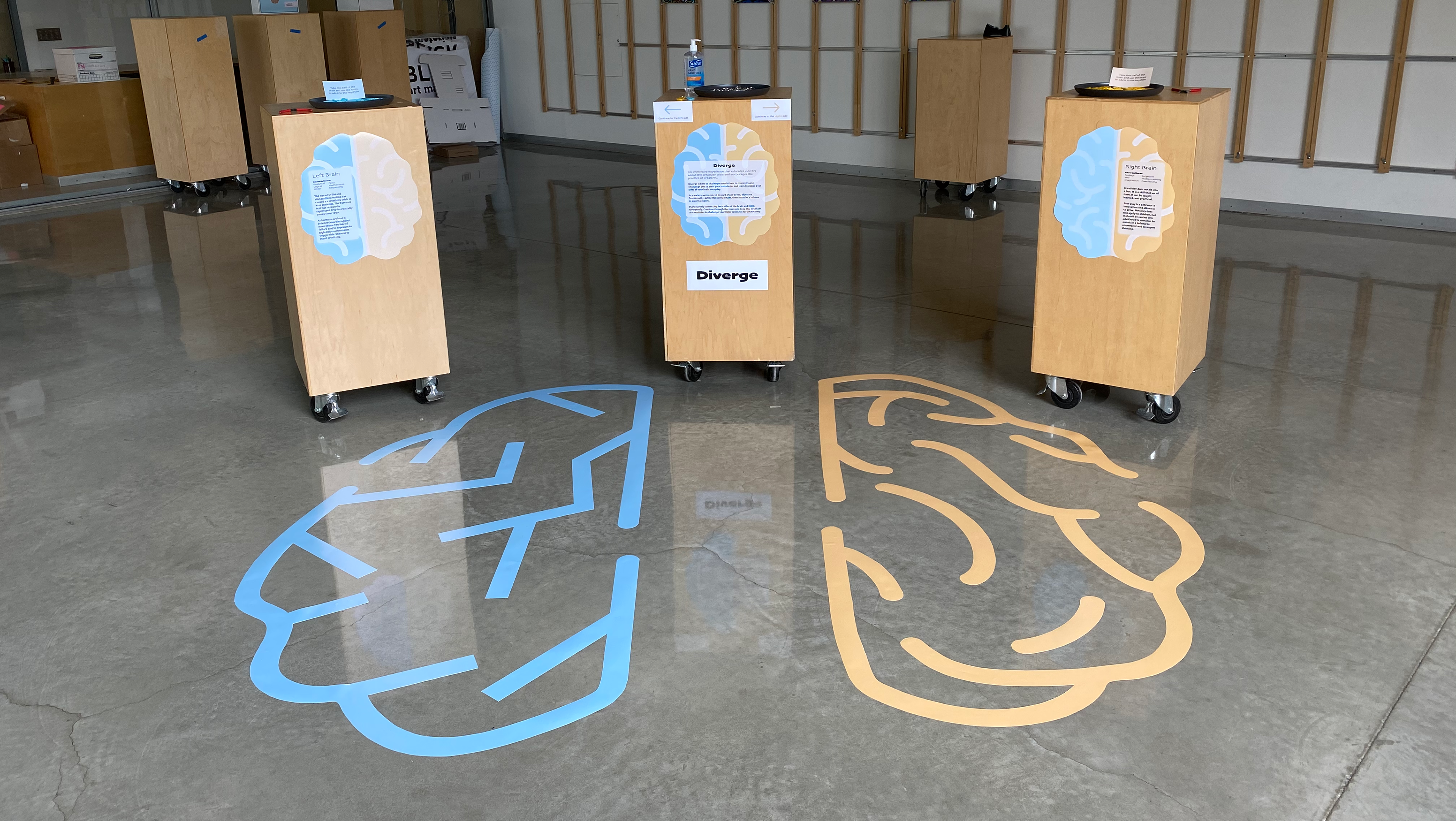Objective: Conduct market and user research to familiarize oneself with mops to design a new product.
This process was broken up into 6 sections (blogs). See my Medium page for all the details. Each step lead me to new ideas which I sketched and considered when finalizing my design.
Market Research: The first, market research, focused on understanding the product's basic purpose and what currently exists in the market. I visited 3 stores (Walmart, Target, and Bed Bath & Beyond) to study the mop display and brands sold at each location. In addition to in-store, research online via Amazon was equally important. The results were compared overall by benchmarking top products.
Market research
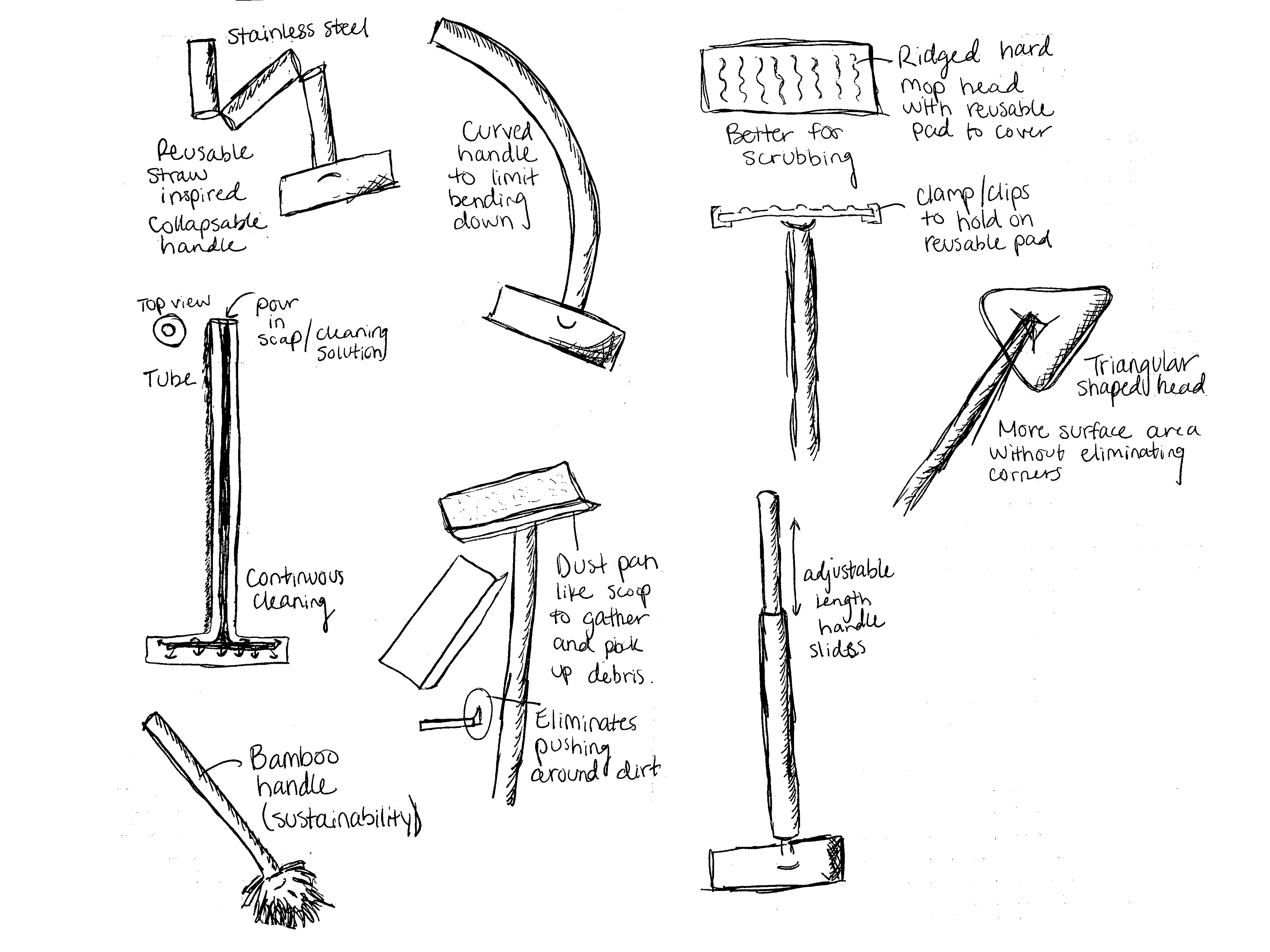
Concept sketches

Concept sketches
User Research: Blog 2 encompassed user research. After conducting an online survey, I received feedback on people's cleaning habits, experiences, and opinions on mops. Holding three interviews drew more insights by watching users and asking personal questions about the experience.
User survey results
Common complaints or needs by users/consumers
Organization of highest priority issues from both the survey and three interviews conducted
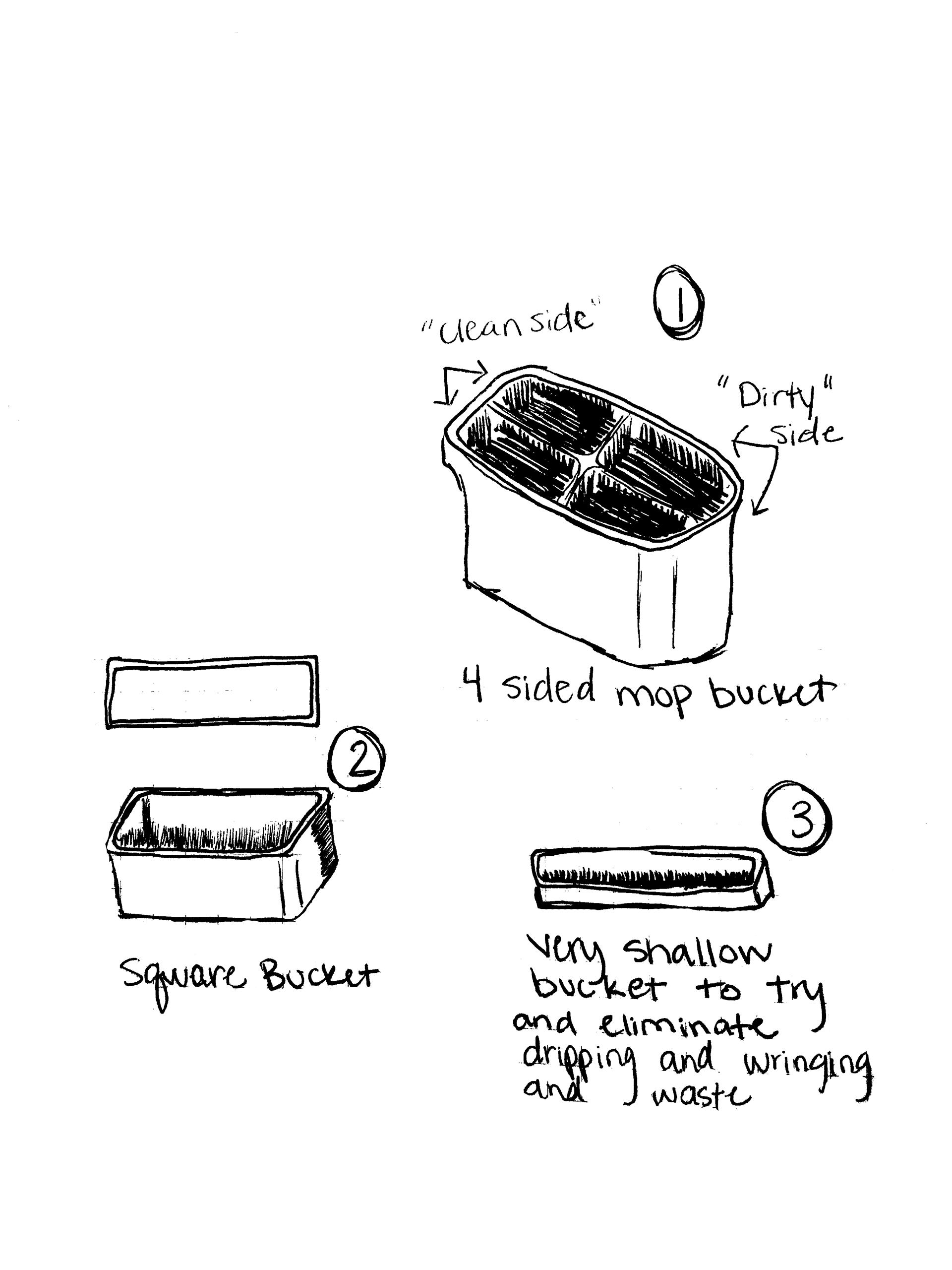
concept sketches
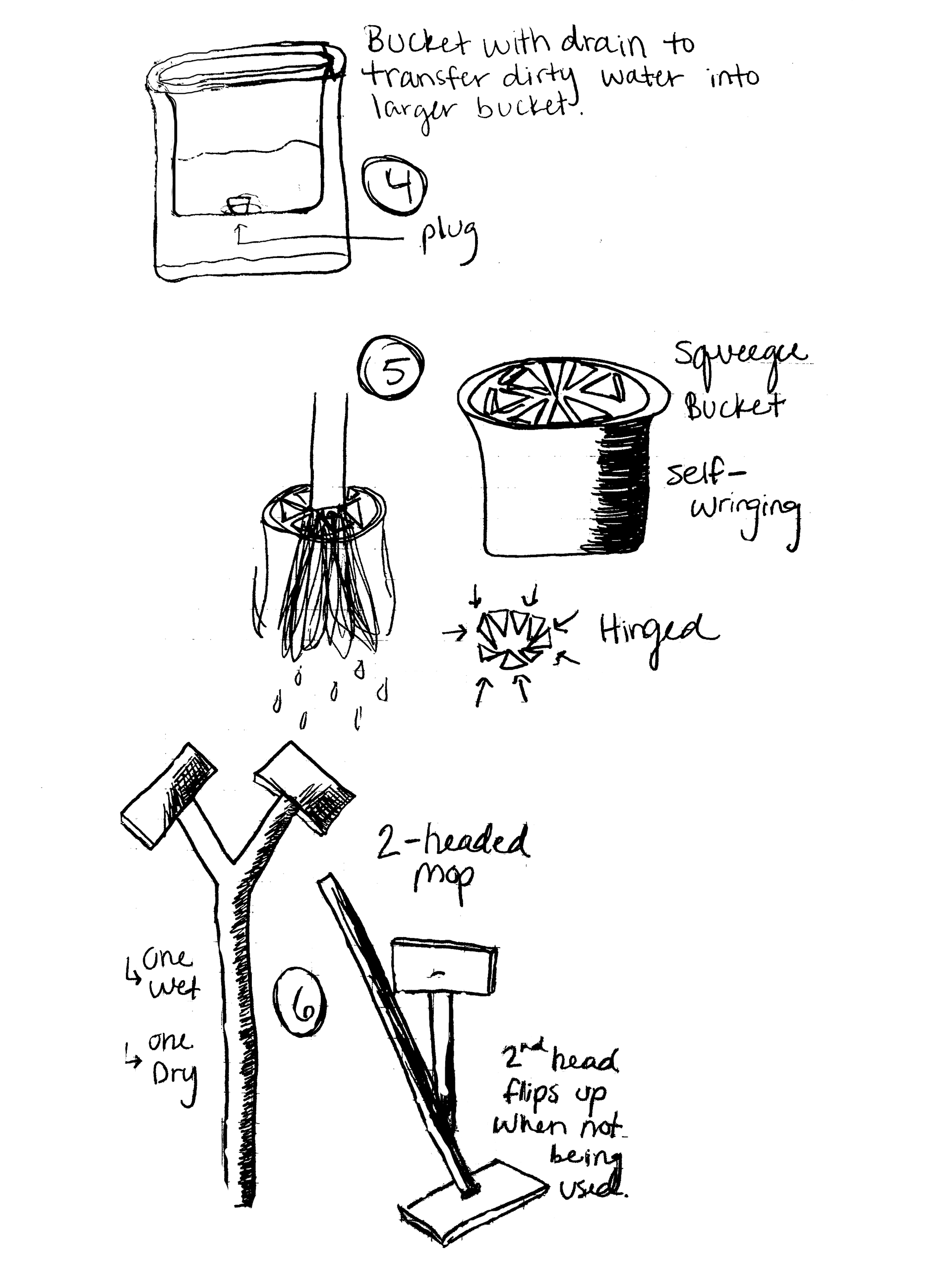
concept sketches

concept sketches
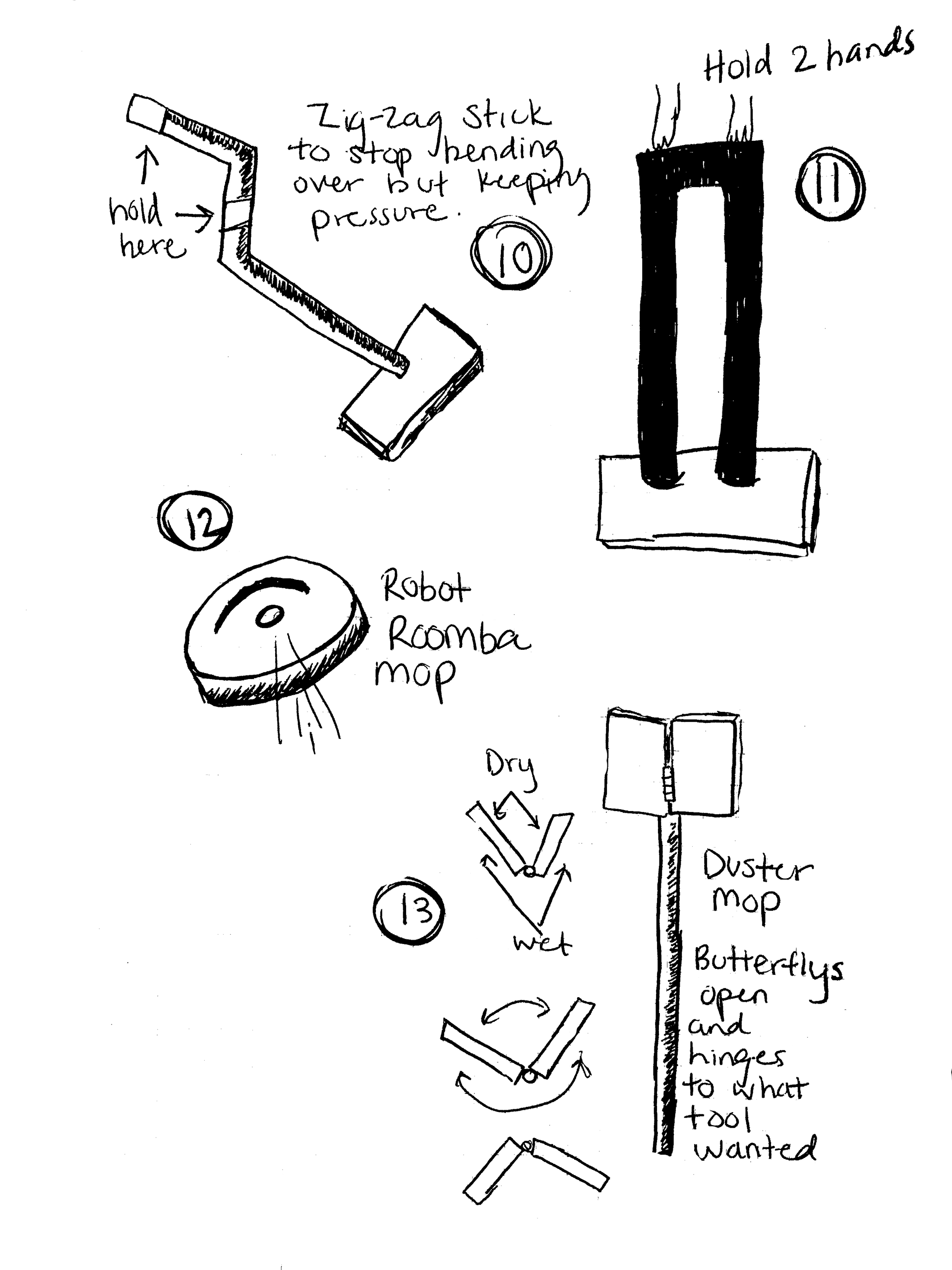
concept sketches
Mind map
Idea Generation part 1: Step 3 was taking this new knowledge and applying it to the idea generation. After wringing out all basic thoughts relating to mops in a mind map, hitting the 100-200 node mark revealed some more novel ideas. Personal experiences/expertise, TILMAG, SCAMPER, and TRIZ all contributed to the generation at this point.
TIMAG: A German acronym for a matrix crossing basic functions with functions of a product
SCAMPER (substitute, combine, adapt, magnify, modify, put to other use, eliminate, reverse, rearrange): An acronym that poses questions to assist in idea generation.
Triz (Theory of Inventive Problem Solving): A matrix including all patents with innovative principles to solve specific problems for similar products.
TILMAG Chart
TRIZ matrix
TRIZ matrix
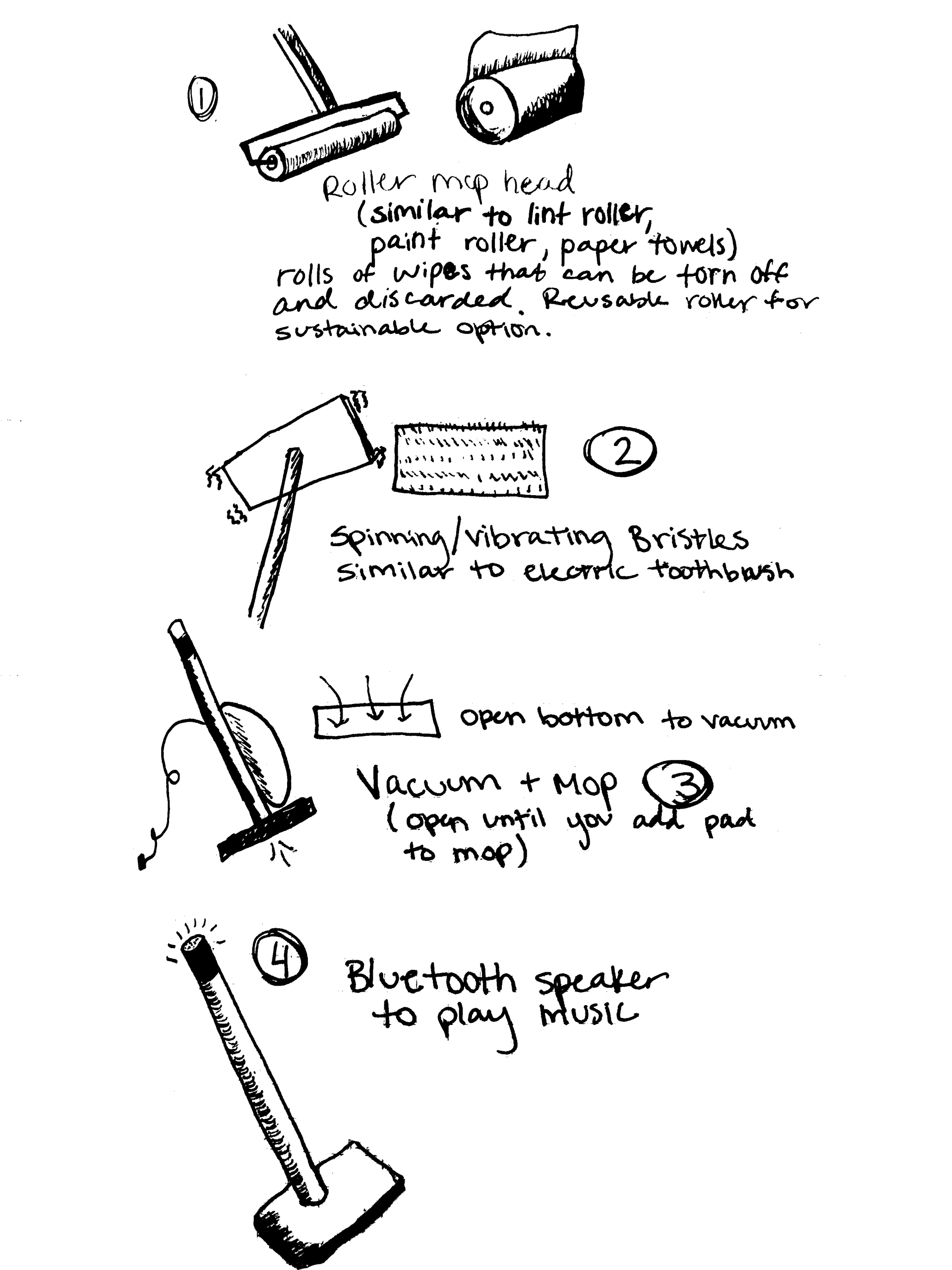
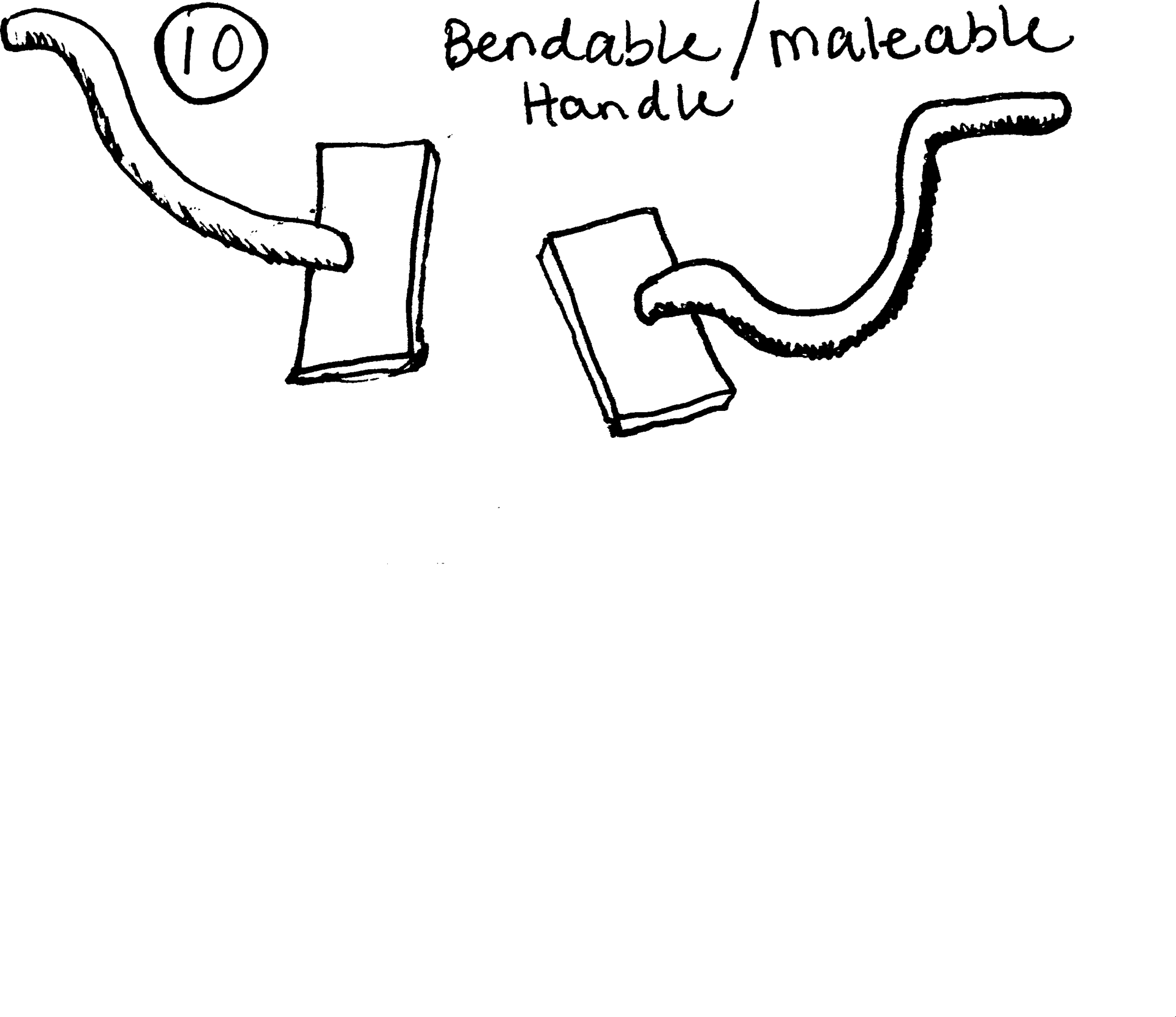

Idea generation part 2: The last of idea generation included hosting a brainstorming session where multiple people built off of each others ideas for a duration of time. It was important to defer judgement of ideas and go for quantity over quality. This helped push boundaries and discover more novel concepts. Leading this session with another designer, an engineer, and a psychologist, it was difficult for some to let go of rationality and logic. Before beginning it was made clear that there were no right or wrong answers and no idea is a bad idea. With a timer set, creativity and imagination needed to drive.
All the ideas were sorted and it seemed like it circled back to the mind map where everyone seemed to think of the same thing until we got far enough along where something more obscure emerged for the ordinary.
Comparison chart
Patent research

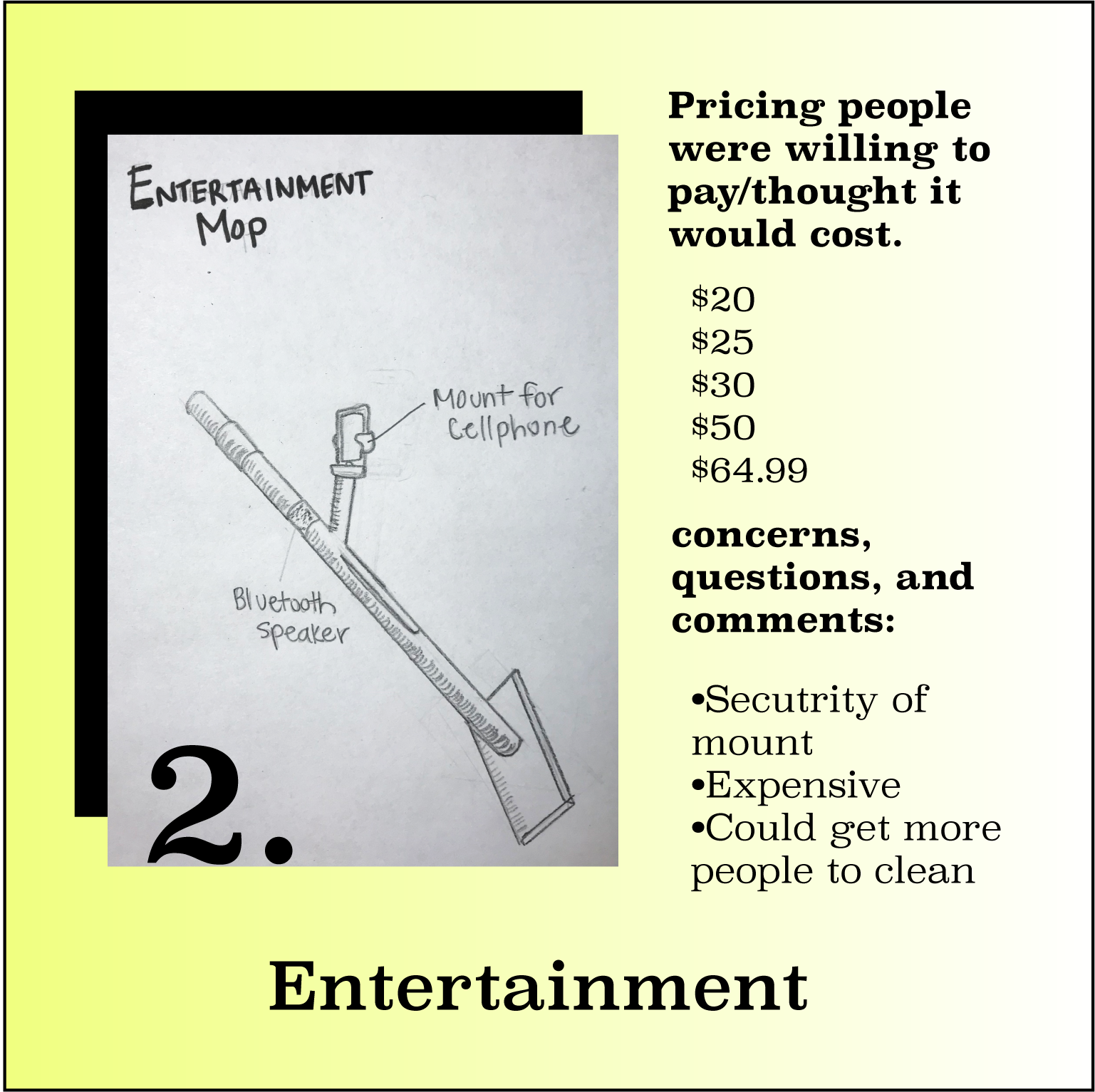

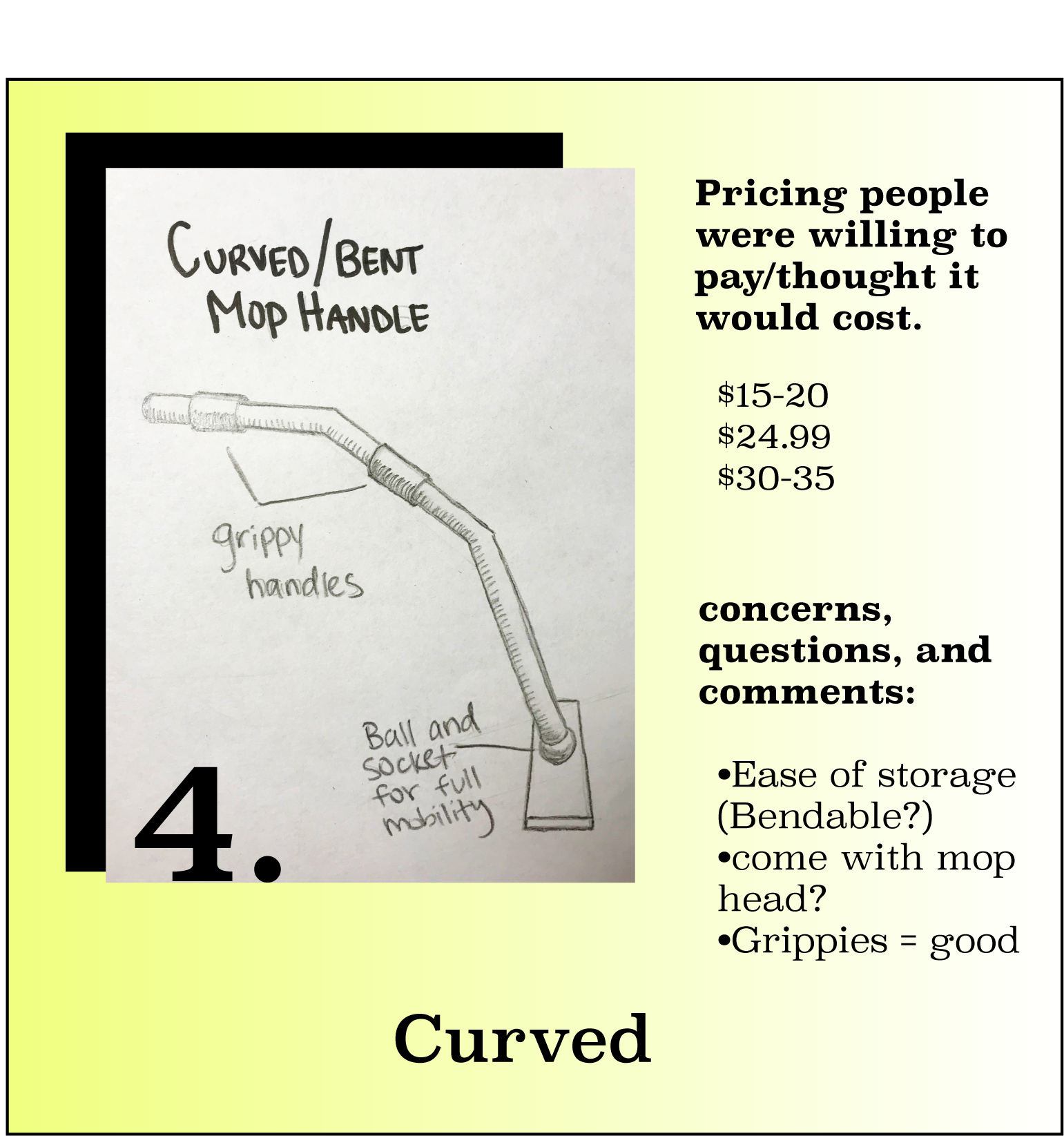

Evaluation part 1: After unpacking all data and sorting ideas, the 10 best ideas were chosen and evaluated. Another survey narrowed down the top 5. Again, benchmarking as well as patent searching was crucial to determine novelty. A Pugh chart helped to compare the 5 ideas and to measure which is the most novel, feasible, and valuable one. I decided on the Kid's mop and created a sketch model to test the idea.
final Evaluation: After unpacking all data and sorting ideas, the 10 best ideas were chosen and evaluated. Another survey narrowed down the top 5. Again, benchmarking as well as patent searching was crucial to determine novelty. A Pugh chart helped to compare the 5 ideas and to measure which is the most novel, feasible, and valuable one. I decided on the Kid's mop and created a sketch model to test the idea. The sketch model was a quick way to visualize the product by using any materials I could find.
If I were to move forward with this product, I would shorted the length of the handle. It still seemed quite tall for a child to be using. It's important to think about how the mop pad would attach to the dome and where the lights would be placed underneath. Production would be the next step to figure out.


